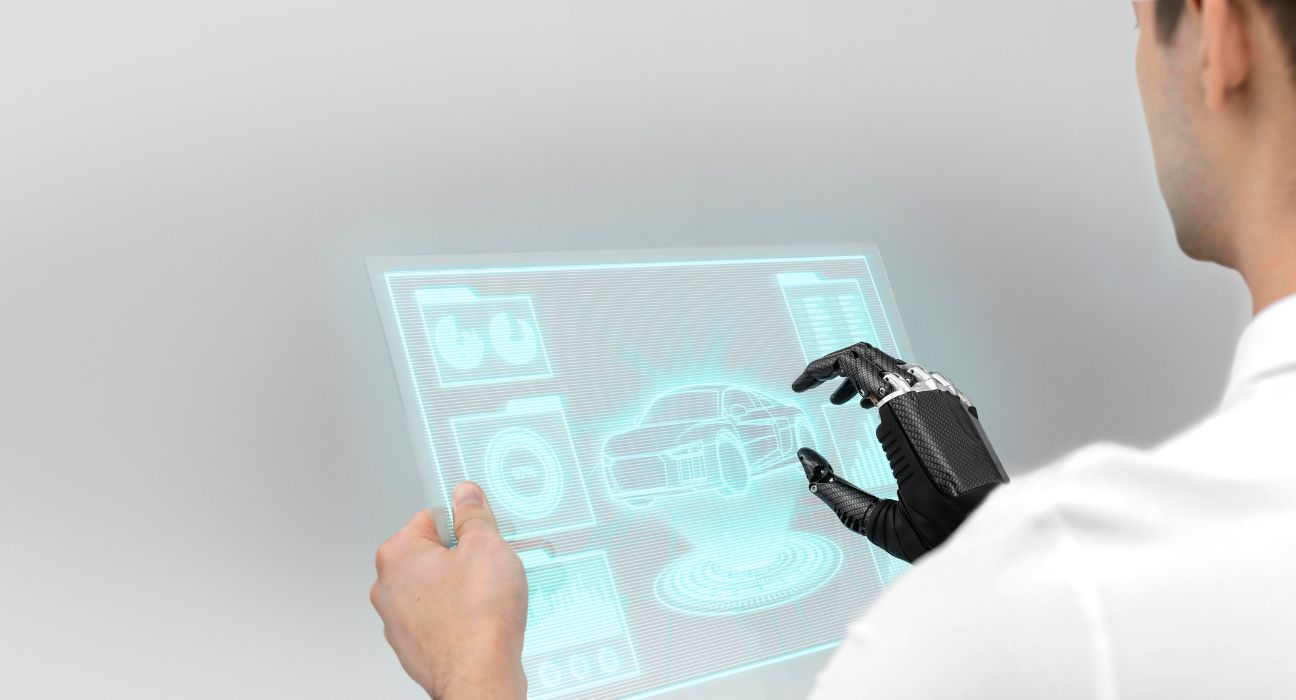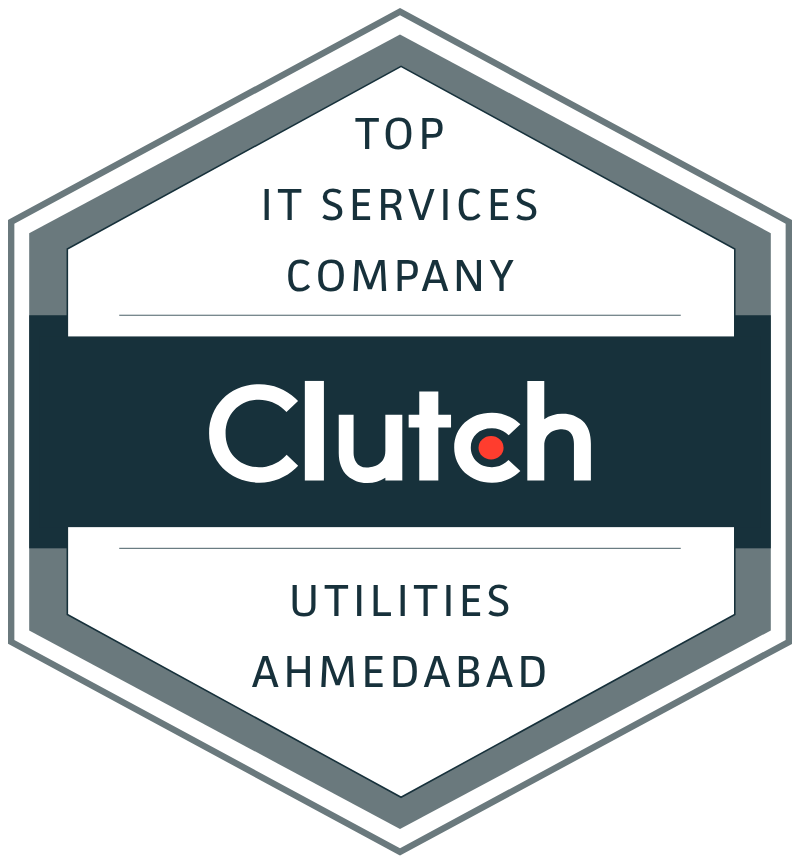How Much Does It Cost to Develop a Custom ERP System

- Deval Patel

- Nov 3, 2025
The 2025 business is data-led, automated and integrated. Whether it is money management and human resource or easier logistics and customer relations, organizations are continuously finding effective methods to remain organized to keep up with competition. Enterprise Resource Planning systems come into the picture.
ERP system is a central nervous system of business - it links departments, enhances communication and provides leaders with a real time and clear outlook of business. Regardless of whether you are operating a developing startup or a multinational corporation, ERP can change the way you utilize resources, make decisions, and grow in a sustainable manner.
Nonetheless, a clearly noticeable shift is taking place in many organizations where generic off-the-shelf ERP solutions are no longer utilized. Rather, they are making investments in bespoke ERP systems that are specific to their operations, objectives and expansion strategies. Why? Since each business works in different ways, one size fits all ERP can usually restrict flexibility, efficiency and innovation.
However, the most important question that may come to mind is - how costly will it be to come up with a customized ERP system?
The reality is that the cost of developing an ERP can be very different. It may be as little as $25,000 and up to several hundred thousand dollars depending on various factors such as complexity, scale and integrations. You can plan your ERP journey smarter by breaking down what impacts your cost and how you can make smart financial decisions.
The Cost of Custom ERP Development Influencing Factors.
Business requirements and Complexity.
The price of a bespoke ERP will greatly rely on your business processes and their level of coverage. Both extra modules, integration, and workflow cost and time to development.
Number of Modules Required
Small business only might require basic modules such as finance, Human resources and inventory management whereas larger organizations might need more sophisticated features such as supply chain management, customer relationship management, or production planning.
Interfaces with other Current Systems
In case your business is already being served by some software in the area of payroll, CRM, or logistics, your ERP should be able to integrate it. Fluid integration is also an assurance of data flowing in the right direction, but also contributes to complexity consequently with the cost. To put it in a few words, the larger your operational requirements, the larger and costlier your ERP development would be.
Technology Stack
The technology employed to construct your ERP is a significant determinant in the development cost and the maintenance in the long run. Programming Languages / Frameworks: Most common stacks are Python/Django, Java/Spring, Node.js or.NET, and each has varying development costs and skill demands. The option usually hinges on scalability, available IT infrastructure and internal proficiency.
- Database Choices: SQL databases (such as PostgreSQL or MySQL) or NoSQL databases (such as MongoDB) have impacts to the cost of performance and cost of the license.
- Cloud ERP: Smaller initial cost, quicker implementation, and simpler to scale up, however, involves continuing subscription or hosting expenses (AWS, Azure, GCP).
- On-Premise ERP: More initial cost on the servers and maintenance but provides unlimited control and security.
By 2025, the cloud-based ERP system is the leader as it is more flexible and less expensive in terms of infrastructure, but in certain industries (such as healthcare or banking), on-premise systems remain the option of choice because of compliance.
User Base and Scalability
Cost is also influenced by your user capacity and geographical reach with your ERP system:
- Active users and active concurrents.
- Multi-location or international deployment.
- High traffic performance optimization.
An internal user system of 50 users will be very cheap compared to an international user system of 5,000 users with 24/7 access and high-level permissions. Scalability should be done early enough to prevent costly re-engineering in future.
Customization and Features
The ERP expenses can go through the roof at customization but at this point the greatest value can be generated.
- Basic Workflows vs. Advanced Workflows: Generic ERPs contain only the basic modules, and custom ones may have such features as automated approval flows, custom dashboards, or real-time analytics.
- Automation & Reporting: Smart automation, AI, prediction, and visual reporting systems make it more complicated but enhance the efficiency significantly.
- Third-party Integrations: Connection to payment gateways, CRM or marketing automation platforms enhances usability at the expense of development time.
In a nutshell- the more customized and the more functional your ERP, the more it will cost.
Security and Compliance Requirement.
In 2025, there will be no bargaining regarding data protection. Adherence to foreign standards provides your ERP with the desired level of trust and security.
Key Standards Include:
- GDPR (for EU data privacy)
- HIPAA (for healthcare data)
- ISO 27001 (information security)
Personalised ERP systems should also have data encryption, role based access control, secure APIs and frequent testing of vulnerabilities. These security features involve input of expertise- this increases the cost of development as well as maintenance costs.
Typical Cost Breakdown
We will take a glance at the spending of your ERP budget. The price is usually broken into five major elements.
Development Costs
This is the gist cost of ERP development, the coding and structure which make your system live.
- Backend Development: Processes data, authentications and system logic. This is the phase that is mostly timely.
- Cost Estimation: between 30 and 40 percent of the total project cost.
- Frontend Development: The user interface- dashboards, reports and menus.
- Approximate cost: 1520 percent of project budget.
- Mobile Application (Where applicable): The current business world may require mobile access to ERP. An additional Android/iOS app is more expensive, but more useful.
Design and UX
The adoption is based on an uncomplicated, friendly interface. Even the most powerful system will break down in case employees experience difficulties with its usage due to the ERP.
- Custom UI/UX Design: The development of dashboards, workflow visualization and role based layout requires time and imagination.
- Cost share: approximately 1015 per cent of the project.
Testing and QA
The ERP systems are an essential part of the mission, bugs can create havoc in the operations. Therefore, there is a need for strict testing.
- Manual Testing: Usability and functional testing.
- Automated Testing: Stability-regression, load and performance testing.
- This stage will take 10-20 percent of the overall budget.
Maintenance and Updates
The process of development does not stop with the launch. Bug fixes, feature additions and scalability improvements should be continuously supported.
- Regular software updates
- Backups and monitoring of the server.
- End-user technical support.
Continued costs are usually between 15-25 percent of original costs of development in a year.
3rd-Party ODs and licensing costs.
Contemporary ERP systems are frequently based on third party APIs or commercial libraries.
Examples include:
- Payment gateways (Payment gateways, PayPal)
- Power BI and Tableau analytics tools.
- Communication API (Twilio, Slack)
These are optional additions but add to the cost of licensing or subscribing.
ERP Development Cost Estimates in 2025
Now, let’s break down ballpark figures based on company size and project scope in 2025:
Business Size | Approximate Cost Range (USD) | Description |
Small Business ERP | $25,000 – $75,000 | Basic modules (HR, finance, inventory) and simple UI. Limited users and minimal integrations. |
Mid-Sized Business ERP | $80,000 – $250,000 | Includes CRM, analytics, automation, and multiple department modules. Scalable for growth. |
Enterprise-Level ERP | $300,000+ | Fully customized, AI-driven analytics, cloud-native, with global scalability and strong compliance. |
Why Prices Vary So Much
- Development Team Whereabouts: In North America or Western Europe developers can charge between $100 and $150/hour, whereas in Asia (India, Philippines, Vietnam) it can be charged as little as $30 and as much as $60/hour.
- Custom Features: The expense is substantially increased with the use of AI, predictive analytics, or machine learning modules.
- Project Duration: An ERP that is small may take 3-6 months and a complicated enterprise system may take more than a year.
ERP Development Cost optimization Solutions.
ERP development is considered as a big investment but there are feasible methods of cost management and optimization.
- Important Modules should be taken First.
Begin with Minimum Viable ERP (MVERP) - address the modules that address the most pressing pain points. Other modules can be implemented in the future.
- Take Readymade Components Where you can.
Reduce time and cost by using what is available in terms of frameworks, APIs, or open-source parts instead of inventing everything.
- Embrace an Agile Development Strategy.
Agile techniques facilitate incremental coding - that is, you have working code sooner and can continue to improve using feedback within a short time. This will prevent expensive reworks in the future.
- Outsourcing vs. In-House Development.
Outsourcing: Economical, availability of international knowledge, shorter turnover.
In-House: Increased fixed costs (salaries, training, infrastructure) and better control.
Having an external development team and an internal product manager is a hybrid approach that can usually offer the optimal trade off between cost and quality.
- ROI and Value of a Custom ERP
Although the initial expenditure of developing a tailor-made ERP might be high, the payback period (ROI) is usually very high.
The Time and Money Saving with a Custom ERP. Less Work with a Manual: Work is reduced through automation of repetitive data and mistakes.
Reduced Bias: Live intelligence and analytics enable smarter and quicker business actions.
Better Co-operation: Cohesive information boosts interdepartmental cooperation.
Scalability: Your enterprise is expanding and your ERP is growing, there is no need to change platforms or re-engineer processes.
Time savings, increased productivity and visibility of operations are some of the ways in which businesses realize a measurable ROI in 12-24 months.
- Long-Term Value
A properly developed ERP can be used over a decade or even longer with appropriate upgrades. It becomes a breathing component of your company, it evolves with you as you grow, venture into new markets or change strategies.
Compared to off-the-shelf solutions with recurring license fees and limited flexibility, a custom ERP is often more cost-effective over the long term.
Conclusion
Creating a tailor-made ERP system will require an initial investment of between 25000 and 300000+ depending on the size of your business, the technical complexity and how much your system needs to be customized. However, it is not only a cost but also an investment in efficiency, scalability and long-term controllability.
In order to maximize your ERP budget:
- Clear requirements must be defined beforehand.
- Start off with basic modules and gradually enlarge.
- Select an ERP experienced technology partner.
A bespoke ERP is able to change how your business will operate in the future, empower your teams and make your organization future-proof and ready your organization to work over the next 10 years.
Are you willing to estimate your ERP project? Contact Ouranos technology as a development partner to have a cost breakdown detail and customized and translate your vision of digital transformation into a reality.

Latest Articles
Browse All Articles
- Other
- Nov 12, 2025
AI in Automotive Industry: Benefits, Use Cases & What's Next
Discover how AI is transforming the automotive industry, from smarter manufacturing and predictive maintenance to autonomous driving and connected vehicles.

- Other
- Nov 11, 2025
How AI is Reshaping ERP: Challenges, Opportunities, and Key Trends
Discover how AI is changing ERP, from smarter automation to predictive insights and business efficiency.



